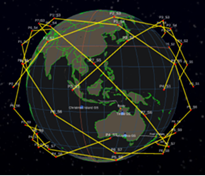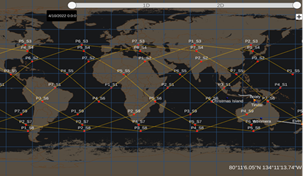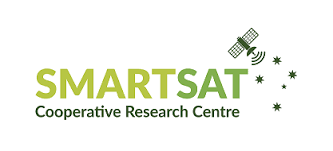We are leveraging our unique position at the intersection of design, psychology, perception, and computer science to apply a human-centered design approach to what is traditionally perceived as a data science problem.
Satellites are increasingly advancing in their capabilities, at a rapid pace, with increased launch frequency and the ability to be re-tasked while in operation.
The progress in satellite technology poses a challenge for industry players and governments who need to decide whether to launch their own satellites or utilise commercial satellite providers. Additionally, they must determine how to maximise their coverage using the available resources.
UNDERSTANDING COMPLEX DATA RELATIONSHIPS
 With the development of cheaper cube-sats to complement the traditional, more expensive long-term satellite asset, the problem has arisen for how to plan and deploy new satellite assets to maximise the earth coverage and return on investment, especially compared to leasing time from commercial satellites that may already be the in the sky. Is it better for an organise to launch its own satellites, and if so, how many and in what configuration, or is it better to lease time from the satellite’s already in orbit?
With the development of cheaper cube-sats to complement the traditional, more expensive long-term satellite asset, the problem has arisen for how to plan and deploy new satellite assets to maximise the earth coverage and return on investment, especially compared to leasing time from commercial satellites that may already be the in the sky. Is it better for an organise to launch its own satellites, and if so, how many and in what configuration, or is it better to lease time from the satellite’s already in orbit?
Given satellite mission planning can become highly technical and complex, the decisions and justifications made must be effectively communicated to non-technical stakeholders to obtain buy-in or approval. This communication process can often be challenging and complicated.
Part of the Australian Research Centre for Interactive and Virtual Environments (IVE) at the University of South Australia, the Wearable Computer Lab collaborated with Saab and SmartSat CRC to help communicate satellite mission planning to non-technical users.
APPLYING AUGMENTED REALITY (AR) TO ENHANCE DECISION MAKING
Using Augmented Reality (AR), the IVE team transformed volumes of data and analytics into images or animations that were ove rlaid onto the real-world problem providing a new information-delivery paradigm that transformed decision-making.
rlaid onto the real-world problem providing a new information-delivery paradigm that transformed decision-making.
Superimposing digital information directly on real objects or environments enabled people to process the physical and digital simultaneously and fully immerse themselves. This allowed people to absorb information, make decisions, and efficiently execute tasks quickly and with accuracy.
IMPACT
The ability for domain experts and novices to rapidly configure and explore the different possibilities for satellite configuration will reduce the time and complexity spent on mission planning whilst ensuring that decisions made are more easily communicated to high-level, non-technical stakeholders, reducing planning, reducing cost, whilst improving the efficiency of the deployed assets and mission. As such, this technology will make a significant contribution to the research and development sandbox for the SmartSat CRC’s SCARLETT-Alpha project with Saab and Airbus.
As an open-source, sovereign capability, the project also serves as a platform for future Australian space systems within the research domain (within and outside of the SmartSat CRC) and industry (Saab). The developed system supports not just satellites, but other land-based assets (e.g. ships), widening the applicable domains to other areas such as logistics and shipping companies who want to maximise return on investment on asset deployment.
"Working with the team at IVE allowed us to explore our domain using new display technologies. The project was a collaboration between Saab staff and IVE staff, co-located together during the project to enable close collaboration. It was fantastic seeing the outcomes generated from the project, even in a short period of time. After also seeing the other work going on within IVE, it led to seeking further collaboration within both the existing project area, and new areas that are of interest to Saab. For Saab, the project allowed us to rapidly explore new tools and work collaboratively with Academia, enabling both parties to gain insights into key research and capability drivers."
Brenton Whitington
Business Development Director - Space Domain
Space Domain - Subject Matter Expert

For more information or to discuss a similar potential project contact: James.Walsh@unisa.edu.au



